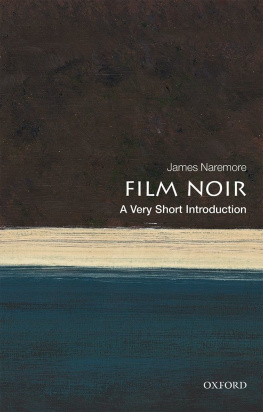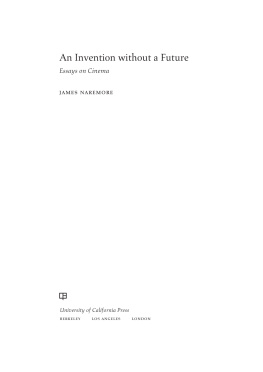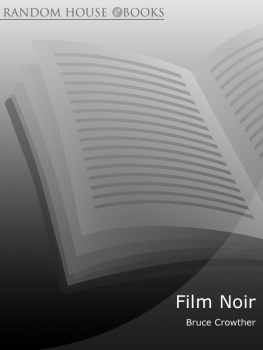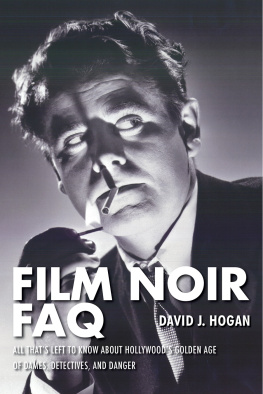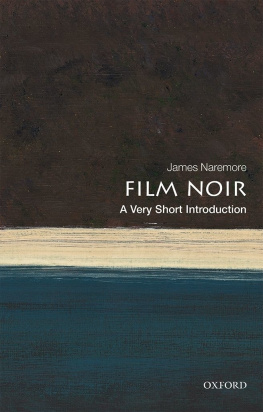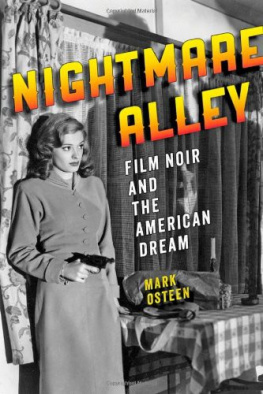University of California Press, one of the most
distinguished university presses in the United States,
enriches lives around the world by advancing
scholarship in the humanities, social sciences,
and natural sciences. Its activities are supported
by the UC Press Foundation and by philanthropic
contributions from individuals and institutions.
For more information, visit www.ucpress.edu.
University of California Press
Berkeley and Los Angeles, California
University of California Press, Ltd.
London, England
1998, 2008 by The Regents of the University
of California
ISBN: 9780-52025402-2 (pbk. : alk. paper)
The Library of Congress has cataloged an earlier
edition of this book as follows:
Library of Congress Cataloging-in-Publication Data
Naremore, James.
More than night : Film noir in its contexts /
James Naremore.
p. cm.
Includes bibliographical references and index.
ISBN: 0520-212940 (pbk. : alk. paper)
1. Film noirHistory and criticism. I. Title.
PN1995.9.F54N37 1998
791.43655dc21
9733090
Manufactured in the United States of America
17 16 15 14 13 12 11 10 09 08
10 9 8 7 6 5 4 3 2 1
This book is printed on Natures Book, which
contains 50% post-consumer waste and meets
the minimum requirements of ANSI/NISO
Z39.481992 (R 1997) (Permanence of Paper).
For Darlene, who made it possible;
for Alex and Patrick, who may someday read it;
and in memory of Bernard Benstock,
mentor and friend,
who knew Double Indemnity by heart.
The streets were dark with something more than night.
RAYMOND CHANDLER,
The Simple Art of Murder, 1944
ILLUSTRATIONS
. Laura, The Woman in the Window, and The Lost Weekend
. The psychotic veteran in Taxi Driver
. A postmodern image of film noir
. Noir as fashion
. City Streets, The Maltese Falcon, and Satan Met a Lady
. Promotion for The Maltese Falcon
. Alan Ladd in This Gun for Hire
. Richard Attenborough in Brighton Rock
. Orson Welles in The Third Man
. Harry Lime (Orson Welles), crucified in a sewer in The Third Man
. Fred MacMurray and Barbara Stanwyck at Jerrys in Double Indemnity
. Close-up of Fred MacMurray and Barbara Stanwyck in Double Indemnity
. Publicity stills from the lost ending of Double Indemnity
. Alan Ladd and Will Wright in the revised ending of The Blue Dahlia
. Paul Kelly in Crossfire
. Robert Ryan in Crossfire
. The death of Dix Handley in TheAsphalt Jungle
. The mothers embrace in The Manchurian Candidate
. Tom Neal in Detour
. Close-up of eyes in Detour
. The haunted coffee cup in Detour
. Mike Hammer as Playboy male in Kiss Me Deadly
. Turning Mickey Spillane upside down
. Killers Kiss
. Murder by Contract
. Tommy Lee Jones in Gotham
. Contrast lighting (Robert Mitchum and Jane Greer in Out of the Past)
. Clothing as contrast in Out of the Past
. Fill lighting and liners in Out of the Past
. Lighting exterior sets in Out of the Past
. Jimmy Valentine lighting in Outof the Past
. Eroticism and mystery light in Out of the Past
. Actors posed against an empty set in Exterior Night
. The Girl Hunt ballet in The Band Wagon
. Retro style in Chinatown
. Dream Sequence from Moonlighting
. Retro killers in Pulp Fiction
. Theresa Harris and Caleb Peterson in Out of the Past
. The private eye as White Negro in Kiss Me Deadly
. Harry Belafonte in Odds against Tomorrow
. Richard Roundtree in Shaft
. Denzel Washington in Devil in a Blue Dress25
. Noir remade: Steven Soderberghs Underneath
. Art film or neo-noir? Billy Bob Thornton in Sling Blade
. Noir as a dream: Patricia Arquette in Lost Highway
. Tom Cruise and Jamie Foxx in Collateral
. Graphic designs in Sin City
. Clive Owen in Croupier
. Naomi Watts and Laura Elena Harring in Mulholland Dr.
PREFACE TO THE
2008 EDITION
More Than Night was an unusually pleasurable book to write, and when I looked back at it after almost ten years in order to prepare a new edition, I was surprised at how little I wanted to change. I might have enjoyed writing at greater length about a larger number of films, but the scope of the book necessarily limited the opportunity to discuss many of my favorite pictures in detail. I chose instead to view noir from a series of seven broad vantage points, and in the process I pushed against the normal boundaries of the term, insisting that it cant be neatly defined, that it isnt exclusively American, and that the discourse surrounding it is largely a postmodern development. I continue to believe that this is the best way to understand film noir, but I must admit that in a few cases my approach required me to concentrate on the margins rather than the center of the noir category. I should perhaps emphasize that even though Ive questioned the assumptions behind many earlier writings, I agree with all previous commentators that the beating heart of film noir can be located in Hollywood during the 1940s and 1950s. This was a period when the industry regularly turned out modest, relatively unsung thrillers, often produced according to formula and released without fanfare, that were nearly always worth seeing. Even today, some of the lesser known films of the typeto mention only two, Roy William Neills Black Angel (1946) and John Berrys Tension (1949) remain deeply satisfying exercises in style and storytelling. Such films are the truest kind of noir, and fortunately we have access to increasing numbers of them on cable TV and DVD. Ive listed a good many of their titles in the pages that follow.
This new edition of More Than Night involves no radical changes in the original text but enables me to correct several factual errors that have been pointed out by friends and reviewers. It also enables me to write a new chapter in which I expand on some basic issues, review some recent literature, and discuss examples of film noir from the first decade of the twenty-first century. For advice and help with this task I owe special thanks to Jonathan Rosenbaum and to several other individuals: Dudley Andrew, Barbara Klinger, Veronica Pravadelli, Robert Rehak, Francois Thomas, and, as always, Darlene J. Sadlier. At the University of California Press, I thank Joe Abbott, Lindsie Bear, Mari Coates, Mary Francis, and Caroline Knapp. Ive also benefited from a generation of undergraduate and graduate students at Indiana University and the University of Chicago, who gave me the pleasure of introducing them to famous examples of film noir and made numerous smart observations about the films. Im particularly grateful to these students for confirming my instinctive feeling that noir continues to be a vital and relevant subject of study.
ACKNOWLEDGMENTS
My work on this project was assisted by fellowships from the John Simon Guggenheim Foundation, the Center for Advanced Study in the Visual Arts at the National Gallery of Art, and the Office for Research and the Graduate School at Indiana University. Portions of the text, in somewhat different form, were originally published in


